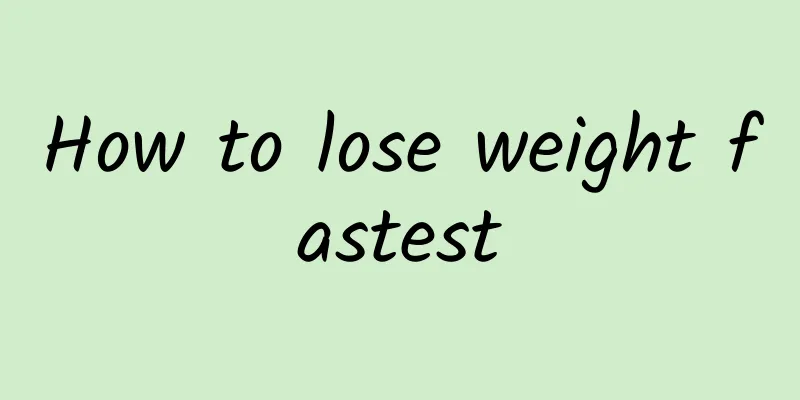What effects does rickets have on children?

|
Rickets is generally caused by a lack of hygienin D, and its main manifestations are bone changes and muscle relaxation, as well as convulsions, sweating, irritability and other symptoms. Therefore, rickets has a relatively large impact on children both physically and mentally, and needs to be treated in time, otherwise the consequences will be disastrous. Below we will introduce in detail the impact of rickets on children. 1. Impact on children’s emotional and physical health Children are irritable, restless, have restless sleep, night terrors, cry at night, and sweat a lot. Due to the stimulation of sweat, they often shake their heads and rub their pillows while sleeping, resulting in hair loss behind the pillow (pillow baldness). As the disease progresses, there is hypotonia, loosening of joint ligaments, and a swollen abdomen like a frog's belly. The children have delayed motor development and are late in walking independently. Severe rickets is often accompanied by anemia, hepatosplenomegaly, malnutrition, weakened systemic immunity, susceptibility to diarrhea, pneumonia, and is prone to becoming chronic. Children with low blood calcium may experience hypocalcemic convulsions (tetany), increased neuromuscular excitability, facial and limb muscle twitching or systemic convulsions. The seizures are brief and stop within a few minutes, but may also occur intermittently and frequently. Severe convulsions may cause suffocation due to laryngeal spasm. 2. Softening of the skull It is more common in infants aged 3 to 6 months, with the occipital bone or parietal bone being the most obvious. When pressed by fingers, the skull becomes concave, and returns to its original shape when the pressure is removed (like the feeling of a ping-pong ball). After 6 months, the growth rate of the skull slows down, manifested as hyperplasia of subperiosteal bone-like tissue, and the frontal bone and parietal bone bulge into a square skull. In severe cases, it may become a cross skull or a saddle skull. In addition, there are delayed closure of the anterior fontanelle, late tooth eruption, weak teeth, and irregular tooth arrangement. 3. Softening of chest ribs The junction of the ribs and costal cartilages on both sides of the chest presents a blunt round protrusion called "rib beads", which is most prominent on the 7th to 10th ribs; the ribs soften and are pulled by the diaphragm, causing the ribs at their attachment points to sink inward to form a transverse groove (called Hersch's groove); in severe rickets, the sternum protrudes forward to form a pigeon chest; the xiphoid process of the sternum is sunken to form a funnel chest. Since the chest deformity affects lung expansion and circulation, it is easy to be combined with severe pneumonia or atelectasis. The above deformities are more common in infants aged 6 months to 1 year. 4. The spine and limbs can bend forward, backward or sideways The epiphyses of the long bones of the limbs are enlarged, and the wrists and ankles are enlarged like "bracelets" and "anklets", which is common at 7 to 8 months. Children begin to walk after 1 year old, and the long bones of the lower limbs bend into "O" or "X" shape due to weight bearing. "O" legs are mild if the distance between the two knee joints is less than 3cm when the two feet are close together, and severe if it is more than 3cm. The distance between the two ankle joints when the two knees are close together for "X" shaped legs and the criteria for judging severity are the same as those for "O" shaped legs. |
<<: What to do if your buttocks swell after being spanked
Recommend
What to do if you have constipation during the 50th day of pregnancy
If constipation occurs in a normal person, it wil...
The secret behind sudden dizziness and lightheadedness is little known
When we suddenly stand up from a squatting positi...
Pollen allergy rhinitis
Rhinitis is an inflammation of the nasal cavity. ...
How to detoxify the intestines most effectively
I eat a lot of food every day. Sometimes the food...
What kind of Panax notoginseng powder is good
The best time to take Panax notoginseng powder is...
How to prevent shingles in the elderly? What should I pay attention to?
Shingles is more likely to occur in autumn. When ...
Can I soak my feet if I have varicose veins?
In fact, varicose veins are the most common vascu...
Method of moving the gestational sac upward
In the early stages of pregnancy, women may disco...
Can sebaceous cysts become diseased?
Sebaceous cyst, which we usually call cyst, is ma...
Stomach and intestines are always gassy
If there is always gas in the intestines, it may ...
[The benefits of women sleeping naked] Girlfriends, learn from this, and good men, please forward this to your wives!
Sleeping naked has become a new fashion. In fact,...
Joy, Anger, Worry, Sadness, Fear, and Health
Under normal circumstances, different mental and ...
What causes dizziness due to hyperthyroidism?
Hyperthyroidism is a high-consumption disease and...
Treatment for psoriasis
Dandruff is recognized as the most common skin di...
The difference between Poria cocos and Poria cocos
Poria cocos and Poria spirit are quite similar. I...









